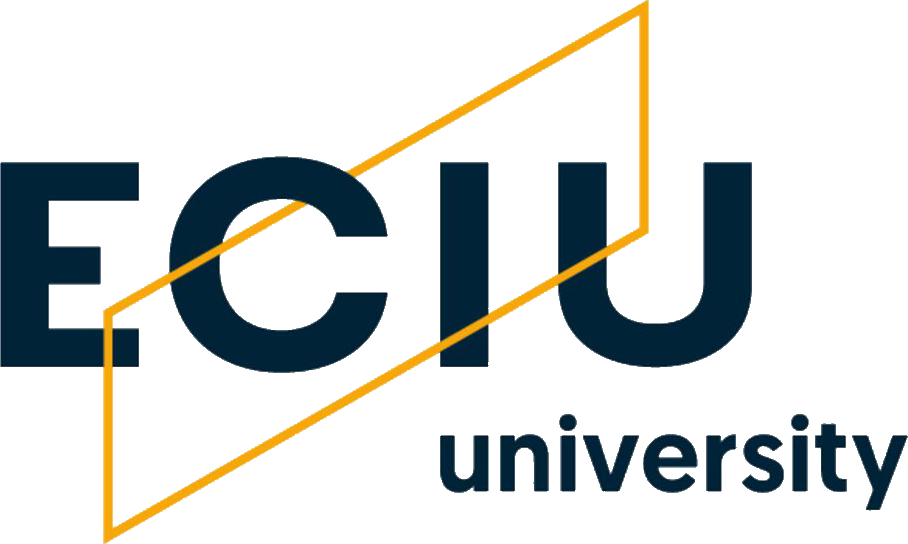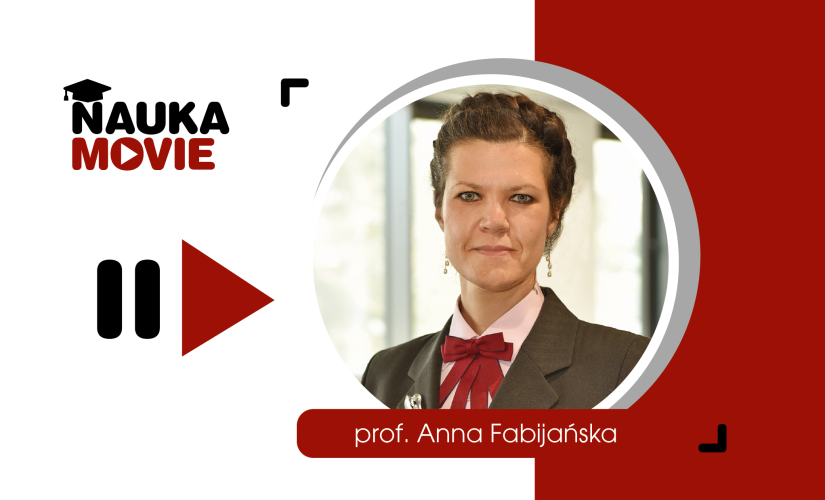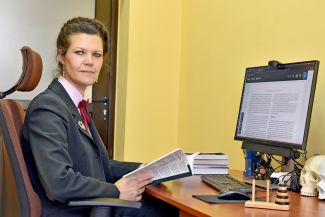Which images and their applications are of particular interest to you?
Most often, the development of image analysis methods is aimed at automating certain specific activities and analyses performed by experts in other scientific fields. Currently, part of the work I am doing is related to the analysis of wood images and is aimed at supporting dendrochronological analyses (i.e., the study of historical phenomena accompanying the growth of a tree). In parallel, I am involved in developing methods to support medical diagnostic imaging, including ophthalmic diagnostics. In the past, I have also developed algorithms dedicated to the analysis of geological images depicting glacial nanos, as well as images acquired in selected industrial processes. Due to the interdisciplinary nature, each time these activities required collaboration with scientists, very often from abroad, representing other scientific fields. I consider this aspect particularly important, as it allows us to acquire knowledge from different areas of science, establish interesting contacts and expand areas of cooperation.
Artificial intelligence raises as many expectations and hopes as it does concerns. Which of these would you point to as the most significant?
Technologies based on broadly understood artificial intelligence (AI) are gradually changing our everyday life. AI will certainly change our future as well. At the same time, in this regard, we are still at the beginning of the road and we do not know what these changes will be. In my view, artificial intelligence is not a threat in itself. The threat is posed by its designers, developers and users, acting with the intention of using it in wicked and immoral ways. Of course, there are issues surrounding the development of AI that raise questions and require legal and ethical norms. I am referring to systems that strongly interfere with privacy, the collection of data about individuals, including data on their behaviour and image data depicting their image. There are well-known reports of discriminatory or bias-soaked decisions made by AI algorithms learned from insufficiently representative data. In the area of image applications, one threat is the spread of disinformation through the use of deep fake technology to generate false disparaging images and videos depicting a given, usually publicly known, person in a very realistic way. The technology can also be used for positive purposes, such as a virtual Salvador Dali showing visitors around one of the museums dedicated to him. This, however, raises questions about permission to use the image of a person who is no longer alive.
Also relevant are copyright issues for images and graphics generated by artificial intelligence, such as from a description. Such models have been taught on millions of images and videos found on the Internet without asking the authors for permission to use them. Another important issue that needs to be studied and regulated is the predictability and explainability of decisions made by AI-based technologies, and the liability for decisions made without human oversight (e.g., in the case of damage caused by autonomous vehicles or damage done by autonomous weapons). Therefore, I think that currently one of the most important challenges accompanying the development of artificial intelligence is to establish rules to control its creation, development and use in a way that excludes or minimizes potential risks.
What caused you to dedicate your work specifically to AI?
It was mainly decided by my curiosity and openness to the latest scientific trends in the field of computer vision. Practically from time immemorial, my scientific interests have been in digital image analysis. As deep learning in its broadest sense began to change and even revolutionize image analysis, and therefore computer vision, I began to apply these solutions to my work as well. Currently, developing algorithms for image analysis, it is difficult to remain noticed by the scientific community without using methods categorized as artificial intelligence.
The field of research is growing very rapidly. What are your research plans for the future?
The main goal of my current activities is to gain new competencies in research, in order to transfer them to research work. Therefore, I plan to go to a foreign university in the near future. I am also in the process of building an international research team to apply for a European grant. I am also looking for opportunities to put my knowledge and skills into practice commercially, in the wider industry and in medicine. For me, the greatest satisfaction will be when my solutions find wide application in practice.
The example of your scientific career is impressive. What was it like to make key decisions for further development?
I have always had an aptitude for science subjects, so it was natural that after high school graduation I would educate myself in this direction. The choice of the field of study was also determined by practical considerations - the direction of computer science seemed to me to be promising and guaranteed to find a job. I never planned to be a scientist. I had no such role models. In retrospect, I think that the choice of this path of my professional development was determined by chance and the decisions of the Faculty of Electrical, Electronic, Computer and Control Engineering authorities at the time. During my studies, I was included in a scientific project carried out at the Institute (then Department) of Applied Computer Science. At that time I learned about the scientific aspect of the University's activities and became interested in scientific work. As part of the project, I prepared a master's thesis, which I defended earlier than the course of study at the time. After defending my master's thesis, I approached the then authorities of the Faculty of Electrical, Electronic, Computer and Control Engineering for admission to the doctoral program in the middle of the academic year - outside the regular admission procedure, and was granted. At that time I also started working part-time in the Department of Applied Computer Science. In retrospect, it seems to me that if those decisions had been different at the time, I might be working in a completely different place now.
Why is it worth being a scientist?
Given the current reality of scientific work in Poland, the continued underfunding of science and the "meagre" level of remuneration for scientists at Polish universities, it is unfortunately becoming increasingly difficult to find a positive answer to this question. I, in the work of a scientist, value above all freedom. This applies both to the choice of topics and directions of work, as well as the timing and organization of work. In addition, scientific work enforces the need for continuous learning and development. It allows you to learn about the world from different perspectives, to better understand it, and to be able to change it. It shapes the ability to critically analyse problems and find solutions. These are skills that are useful not only in scientific work
You can read more about the achievements of Prof. Anna Fabijańska on website.



